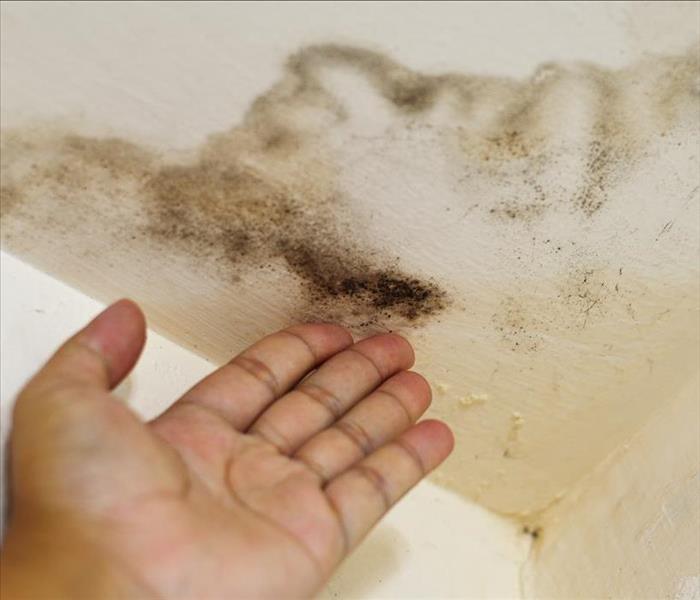Roof Leaks and Mold: Your Top Questions Answered
3/31/2022 (Permalink)
Roof Leaks and Mold
The last thing you want to worry about is a leak in your building’s roof. If the leak is small, it can be tempting to stick a bucket under the leak and put off the repairs. Don’t give in to this temptation! A leaky roof can lead to all kinds of problems in a short time, such as black mold, swollen wood, and soggy sheetrock. The answers to the following common questions hold the clues to avoiding a moldy, leaky mess in your Los Gatos, CA, building.
1. How Long Does It Take for Mold To Start Growing?
Mold spores are always present in the air, both outside and in your building. These spores remain dormant while they are airborne. When the spores land on a moisture source, such as a ceiling leak, they begin to feed and reproduce. Since the spores are already present in the air, you don’t have much time after even a small leak before the spores become active. Black mold spores typically become actively growing mold within about 24 hours after the leak begins.
2. How Can I Prevent Mold From Forming?
The key to avoiding a mold infestation is to act quickly as soon as you discover a roof leak. Try to identify resolve the source of the leak, to stop any more water from entering. Use towels or a shop vacuum to dry surfaces as thoroughly as you can. A dehumidifier may also help. If the leak is large, or if you can’t easily identify the source, contact a professional contractor as soon as possible.
3. What If Mold Has Already Appeared?
If the leak has existed for some time before you noticed it, don’t waste time: Contact an experienced mold remediation company right away. DIY cleanup efforts are often ineffective, and mold will continue to multiply in the meantime.
Don’t let a leaky roof turn into a black mold nightmare for your building. Understanding the mold growth cycle and acting quickly when you discover the leak will save you time and money.






 24/7 Emergency Service
24/7 Emergency Service
